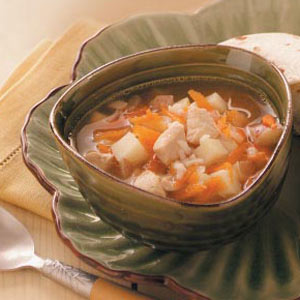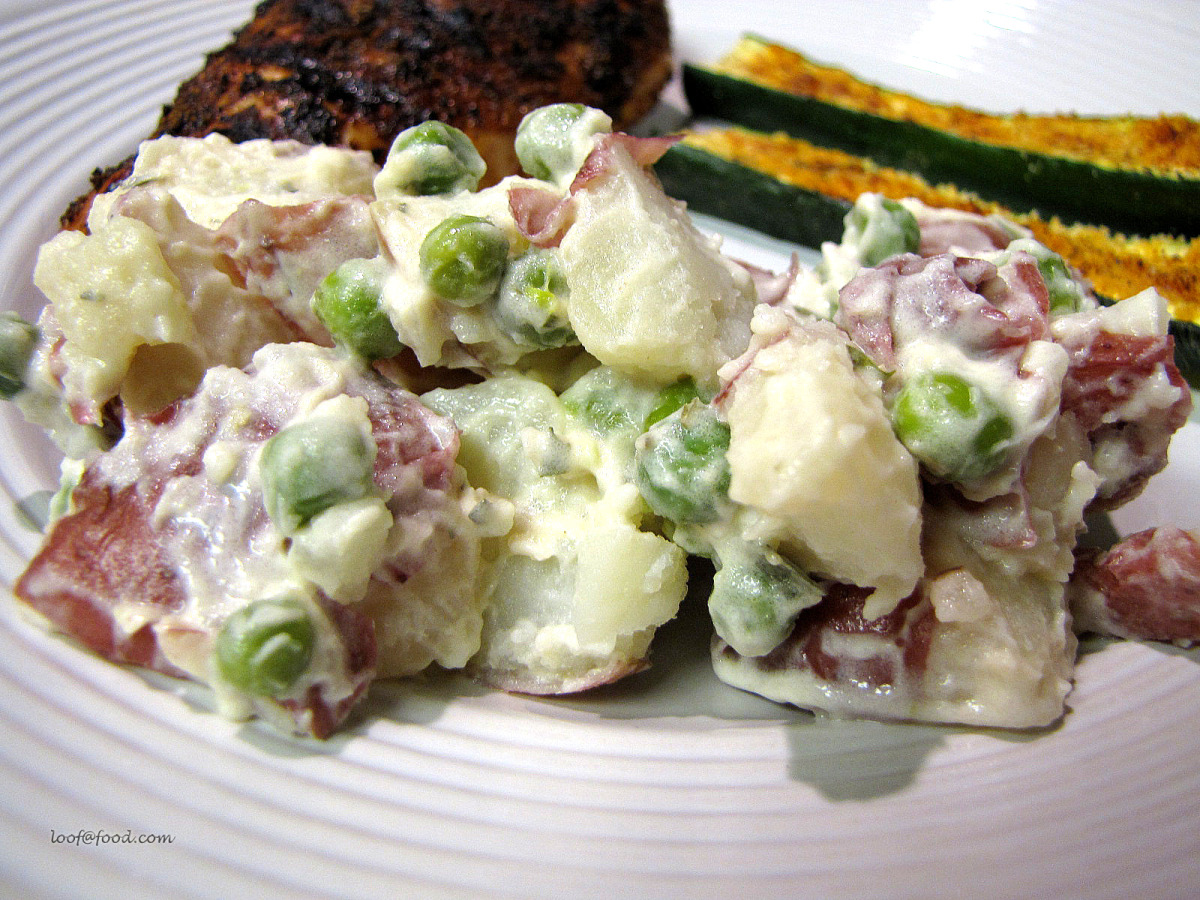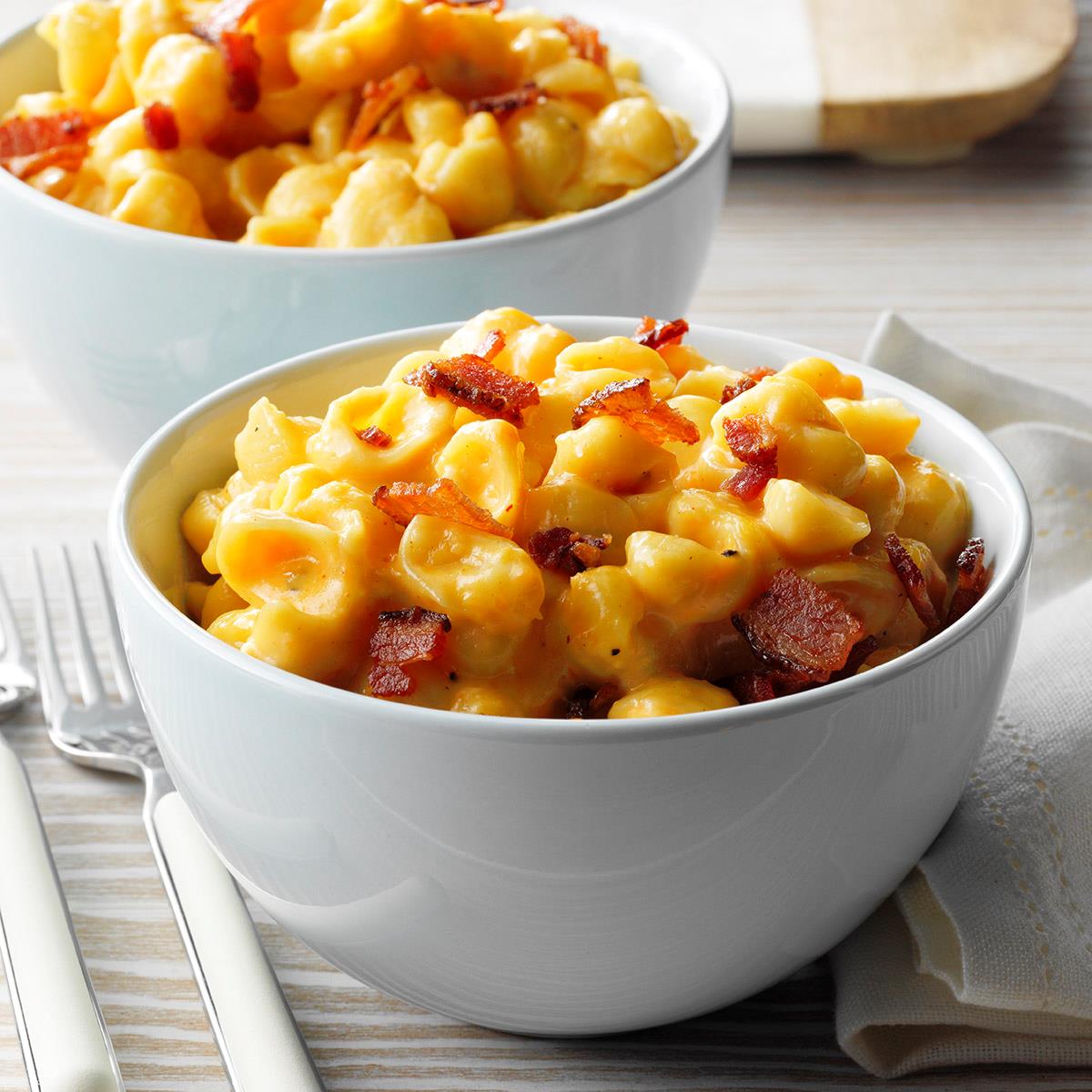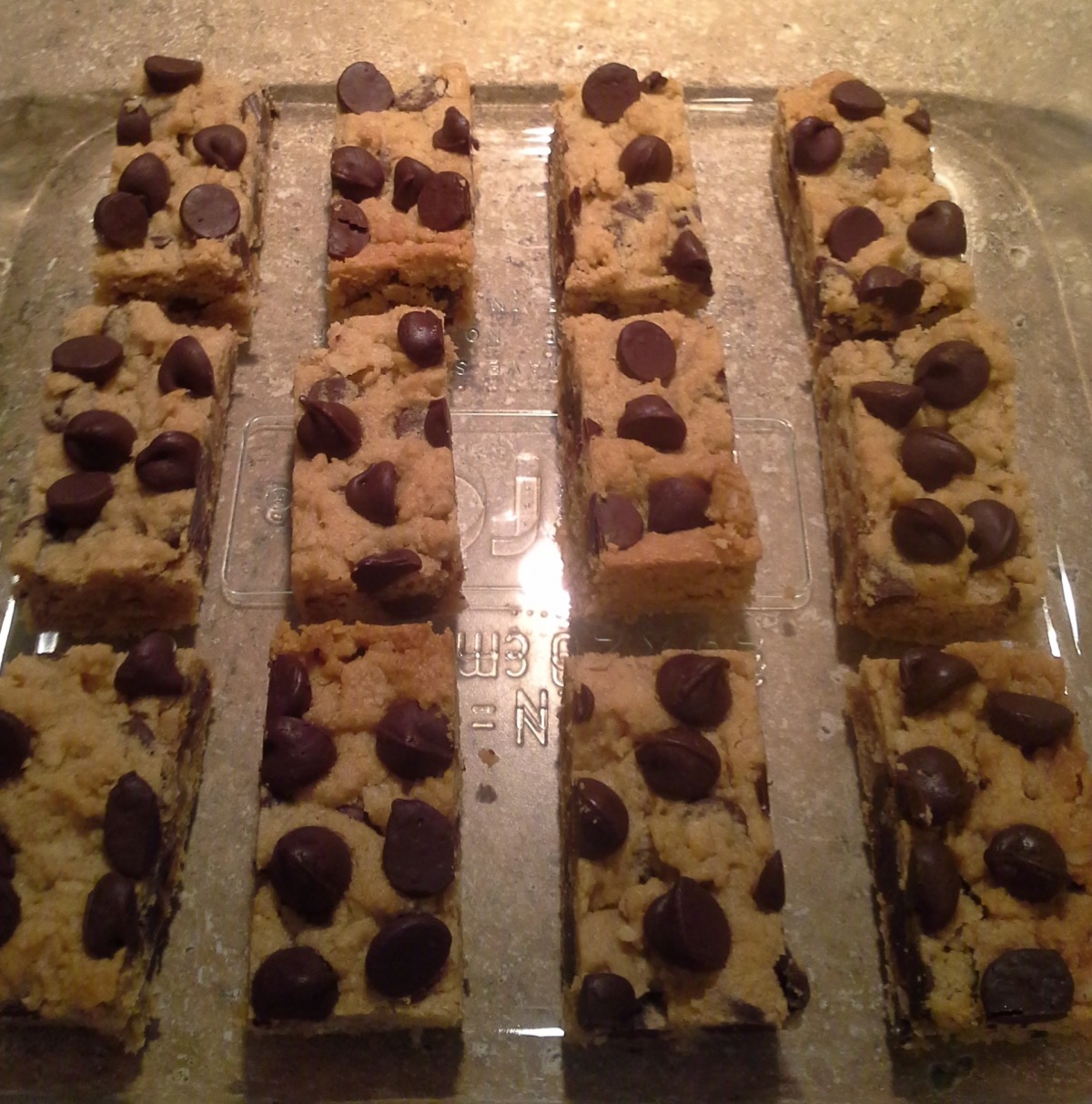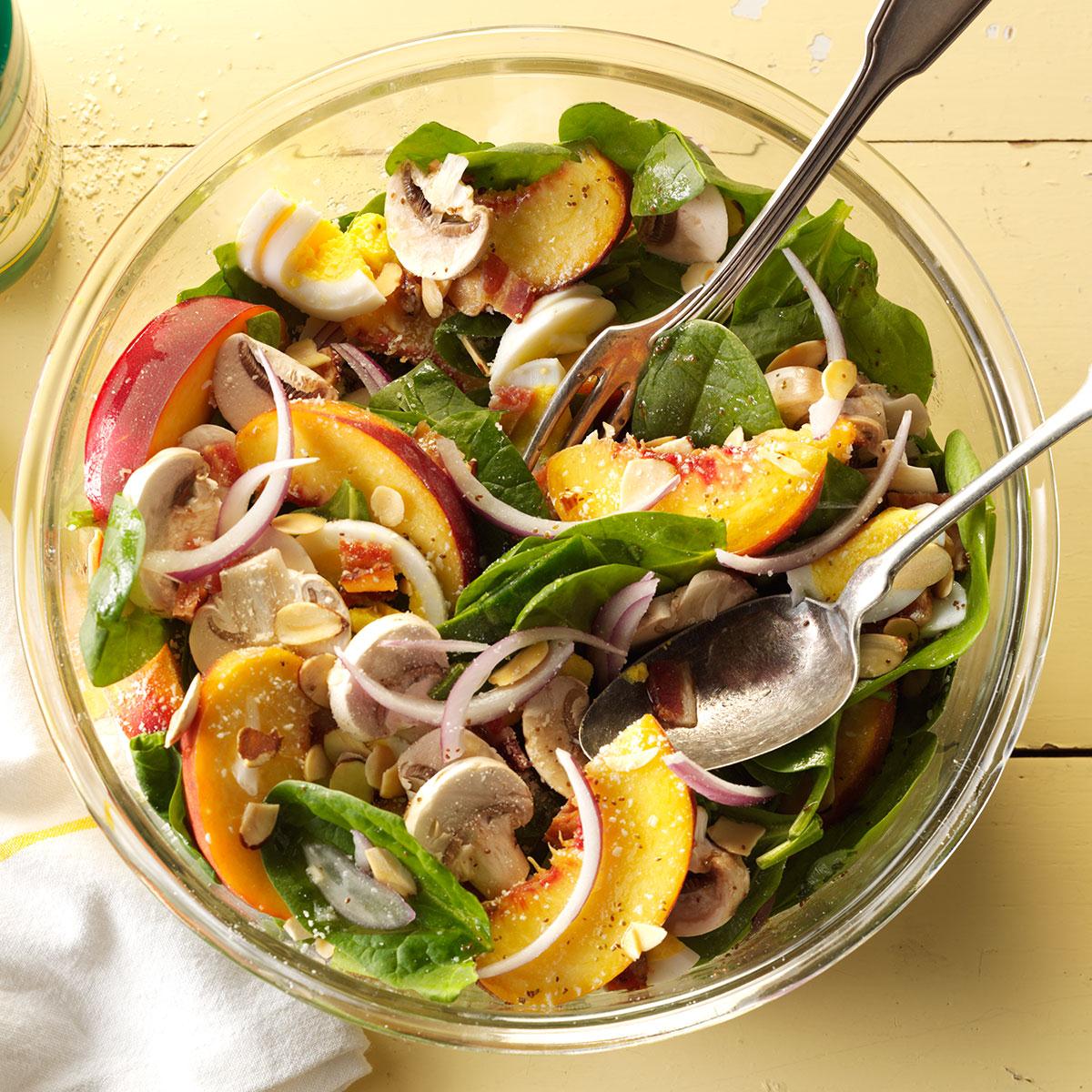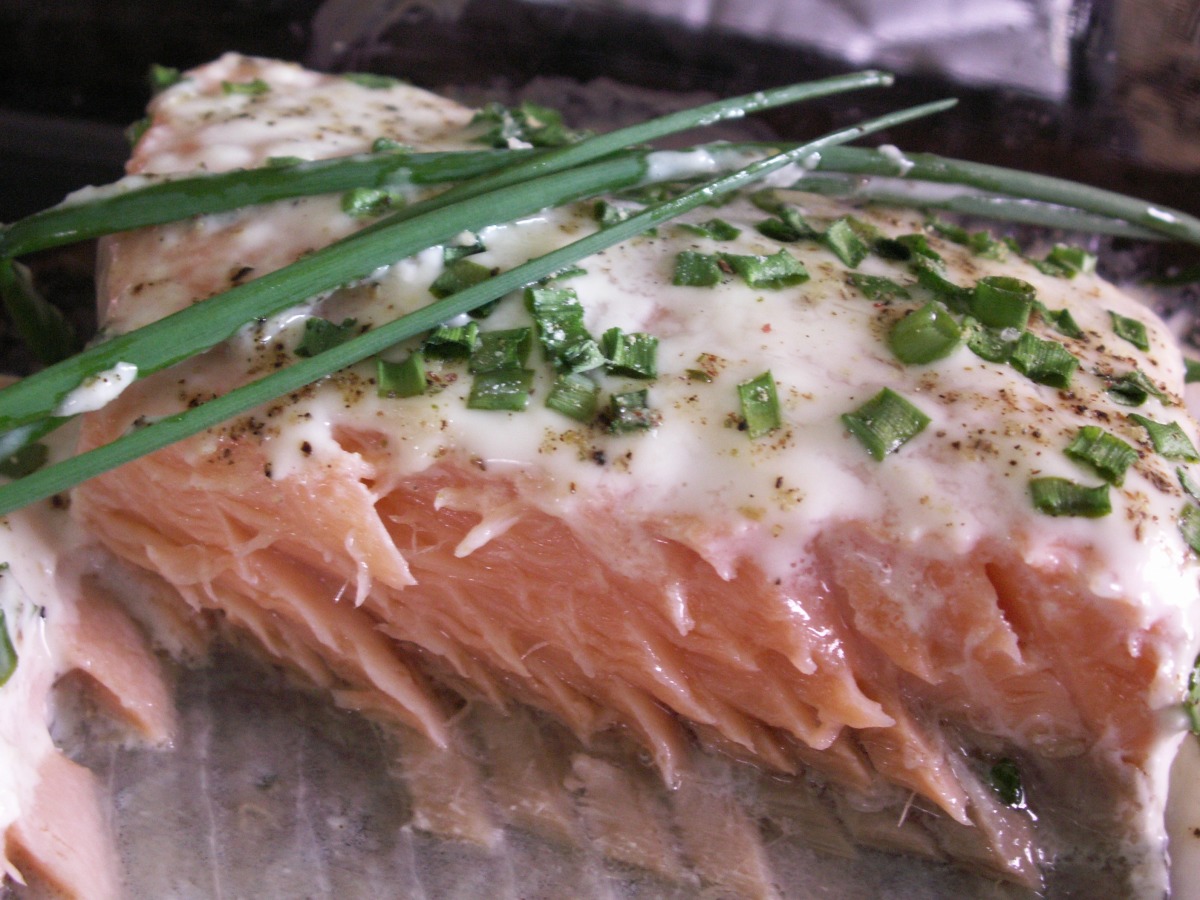Welcome to the world of flavors! Today, let's embark on a culinary journey and discover the art of preparing a timeless classic - Roasted Turkey with Gravy. This dish is a centerpiece of many celebrations, a symbol of warmth, and a feast for the senses. Join us as we delve into the secrets of creating a perfect roasted turkey, accompanied by a rich and savory gravy that elevates the entire experience. Along the way, we'll explore variations on this classic, providing you with a range of options to suit your taste preferences and dietary restrictions. Whether you prefer a traditional herb-infused turkey or a modern twist with a citrus glaze, we have recipes to guide you every step of the way. So, get ready to tantalize your taste buds and impress your loved ones with a roasted turkey that will leave an unforgettable mark on your culinary adventures.
Let's cook with our recipes!
EASY HIGH-HEAT ROAST TURKEY WITH GRAVY
The high-heat method is my favorite way to roast turkey. The bird cooks quickly and emerges from the oven juicy and crisp-skinned.
Categories Dinner
Time 2h
Yield 8 to 10
Number Of Ingredients 14
Steps:
- Before cooking, be sure that your oven is VERY clean to prevent smoking. Preheat the oven to 450°F and set an oven rack in the lowest position.
- Remove and discard truss that holds turkey legs together. Trim off and discard any excess fat in the neck or body cavity. Remove giblets and neck; discard or save for stock.
- Rinse the turkey inside and out with warm water. Pat dry with paper towels. Place a V-shaped rack in a 13 x 16 x 3-inch heavy stainless-steel roasting pan. (Do not use a dark roasting pan or a disposable aluminum pan.) Rub the turkey skin all over with the olive oil and sprinkle with the salt and pepper. Set the bird breast-side-up on the rack. Pull the wings away from the body, then firmly twist them to push the wing tips under the bird. Using aluminum foil, form caps over the tips of the end of each drumstick. (Do not tie the legs together, add stuffing, or close the body cavity.) Insert a digital leave-in meat thermometer near the center of the breast through the thickest part until the tip touches the bone.
- Turn on your exhaust fan and crack a kitchen window. Place the turkey in the oven and roast, without basting, until the thermometer reaches 160°F, 1 to 1½ hours. If your oven has hot spots, rotate the pan halfway through cooking to assure even browning. (If at any point your kitchen gets unbearably smoky or the fat is spitting, pour a cup of tepid water in the roasting pan. Just keep in mind that the liquid will create steam in the oven, so the skin won't be quite as crispy.)
- Remove the pan from the oven. Using clean oven mitts (that you don't mind getting dirty), carefully tilt the turkey so that the juices from the cavity run into the roasting pan. Transfer the turkey to a platter or cutting board (do not clean the roasting pan), tent the turkey with foil, and let it rest for 20 to 30 minutes. This will allow the internal temperature to reach at least 165°F (the USDA safe-cooking temperature for turkey) and the juices to settle.
- While the turkey rests, make the gravy: Place the roasting pan on a burner on your stove. (Be very careful handling the pan; it's easy to forget that it's hot.) Skim away any excess fat or solids that have accumulated in the pan. Add the broth and cook over medium heat, scraping the bottom of the pan with a whisk or wooden spoon to loosen any brown bits, until simmering. Turn off the heat and set aside.
- In a medium sauce pan, melt the butter over medium-low heat. Add the onions and cook until very soft and translucent, about 15 minutes. Do not brown. Whisk in the flour and cook for 2 to 3 minutes, stirring occasionally. Whisk in the turkey dripping-chicken broth mixture and Cognac and cook, uncovered, stirring occasionally, for about 5 minutes or until thickened. Stir in the cream (if using) and chopped herbs. Taste and adjust seasoning with salt and pepper, if necessary. Transfer to a gravy bowl.
- Carve the turkey and serve with the gravy on the side.
- Make-Ahead Instructions: If you don't mind losing the crispy skin, the turkey can be roasted and carved ahead of time. Pour a thin layer of the gravy into an ovenproof serving platter. Arrange the carved turkey nicely on top of the gravy; cover tightly with plastic wrap and refrigerate for up to two days. Refrigerate the remaining gravy in a separate container. To reheat: remove the plastic wrap and cover the platter with aluminum foil. Place in a 325°F-oven for 20 to 30 minutes, until the turkey is hot. Reheat the gravy in the microwave or on the stovetop.
Nutrition Facts :
CHEF JOHN'S ROAST TURKEY AND GRAVY
The biggest myth in all of American cookery is the belief that a juicy, perfectly cooked turkey is difficult for the novice cook to achieve. One of the secrets to a moist, delicious, and beautiful turkey is spreading butter under the skin. You can season the butter any way you want; the possibilities are endless.
Provided by Chef John
Categories Meat and Poultry Recipes Turkey Whole Turkey Recipes
Time 4h55m
Yield 16
Number Of Ingredients 19
Steps:
- Preheat oven to 325 degrees F (165 degrees C).
- Mix 2 tablespoons salt, and 1 tablespoon pepper, and poultry seasoning in a small bowl. Tuck turkey wings under the bird, and season cavity with about 1 tablespoon of the poultry seasoning mixture. Reserve remaining poultry seasoning mix.
- Toss the onion, celery, and carrots together in a bowl. Stuff about 1/2 cup of the vegetable mixture, rosemary sprigs, and 1/2 bunch sage into the cavity of the turkey. Tie legs together with kitchen string. Loosen the skin on top of the turkey breast using fingers or a small spatula. Place about 2 tablespoons butter under the skin and spread evenly. Spread the remaining butter (about 2 tablespoons) all over the outside of the skin. Sprinkle the outside of the turkey with the remaining poultry seasoning mix.
- Spread the remaining onion, celery, and carrots into a large roasting pan. Place the turkey on top of the vegetables. Fill the pan with about 1/2 inch of water. Arrange a sheet of aluminum foil over the breast of the turkey.
- Roast the turkey in the preheated oven until no longer pink at the bone and the juices run clear, about 3 1/2 hours. An instant-read thermometer inserted into the thickest part of the thigh, near the bone should read 165 degrees F (75 degrees C). Remove the foil during the last hour of cooking. Baste the turkey with the pan juices.
- While the turkey is roasting, make stock: place neck, heart, and gizzards in a saucepan with the bay leaf and water. Simmer over medium heat for 2 hours. Strain the turkey giblets from the stock, and discard giblets. There should be at least 4 cups of stock.
- Remove the turkey from the oven, cover with a doubled sheet of aluminum foil, and allow to rest in a warm area for 10 to 15 minutes before slicing. Pour the pan juices, about 3 cups, into a saucepan and set aside. Skim off the turkey fat from the pan juices, reserving about 2 tablespoons.
- Heat 2 tablespoons of the turkey fat and 1 tablespoon butter in a saucepan over medium heat. Transfer the onion from the roasting pan into the skillet. Cook and stir until the onion is browned, about 5 minutes, then stir in the flour. Continue to cook and stir for about 5 minutes more; whisk in 4 cups of the skimmed turkey stock and the reserved pan juices until smooth; skim off any foam. Stir in the balsamic vinegar. Simmer until the gravy is thickened, whisking constantly, about 10 minutes. Stir in 1 tablespoon of chopped sage, and season to taste with salt and black pepper.
Nutrition Facts : Calories 942.1 calories, Carbohydrate 4.6 g, Cholesterol 256.3 mg, Fat 70.1 g, Fiber 0.9 g, Protein 68.7 g, SaturatedFat 22.8 g, Sodium 949.8 mg, Sugar 1.2 g
PERFECT ROAST TURKEY AND GRAVY
Provided by James Briscione
Categories main-dish
Time 14h30m
Yield 8 to 10 servings
Number Of Ingredients 19
Steps:
- Twelve to 24 hours before cooking the turkey, remove the giblets and dry the turkey inside and out with paper towels. Rub the Dry Brine on all sides of the turkey, completely seasoning the exterior as well as the interior cavity. Place the turkey in a pan inside the refrigerator overnight.
- Arrange a rack in the center of the oven and preheat to 350 degrees F.
- When ready to cook, remove the turkey from the refrigerator and pat dry with paper towels. Cut one of the onions into quarters. Place the onion quarters, herbs and one head of the garlic inside the turkey. Tie the legs together with a single piece of string and tuck the wings under the body.
- Chop the remaining onion. Combine the chopped onion, carrots, celery and remaining garlic in a large roasting pan. Place the turkey on top of the vegetables in the roasting pan.
- Brush the entire surface of the turkey with the melted butter and sprinkle lightly with salt. Pour any remaining melted butter over the vegetables in the base of the pan. Place the turkey in the oven to roast on the center rack with the legs towards the back wall of the oven.
- After 45 minutes, remove the turkey from the oven and set on the stovetop. Carefully tilt the pan to one side and use a ladle to baste the butter over the breast of the turkey. Return the turkey to the oven, this time with the breast toward the back wall of the oven. Continue basting and rotating the turkey every 45 minutes until done. The turkey is done when an instant-read thermometer inserted into the thickest part of the thigh reads 165 degrees F, 2 1/2 to 3 hours total. If at any point during the cooking the skin of the breast becomes too dark, cover the breast with aluminum foil and continue cooking to doneness.
- When the turkey is done, remove to a cooling rack to rest for 30 to 45 minutes.
- To make the gravy, place the roasting pan on the stovetop. Turn the heat beneath the roasting pan to medium. Cook the vegetables, stirring constantly, until the butter remaining in the pan is translucent, up to 6 minutes. Pour off all but 2 tablespoons of the butter, if necessary. Sprinkle the flour over the vegetables and stir until a thick paste forms. Pour in the wine, stirring well and scraping the bottom of the pan to release any brown bits that remain stuck to the pan. Add the chicken stock and continue stirring until the stock reaches a simmer. Simmer for 10 to 15 minutes until flavorful and thickened to your liking.
- Transfer the entire gravy mixture to a saucepot and bring back to a simmer. Whisk in the remaining 2 tablespoons butter. Season to taste with salt and pepper and strain the gravy into a serving container. Serve with the carved turkey.
- Combine the salt, sugar, garlic powder, pepper, fennel and sage in an airtight container and shake to thoroughly combine. Keeps for up to 6 months.
SIMPLE TURKEY GRAVY
A traditional from-scratch gravy recipe will work for any roasted meat or poultry. Switch up the herbs to fit your preferences, or simply use what you have on hand. -Taste of Home Test Kitchen, Greendale, Wisconsin
Provided by Taste of Home
Time 20m
Yield 16 servings (1/4 cup each).
Number Of Ingredients 6
Steps:
- Pour turkey drippings and loosened browned bits from roasting pan into a 4-cup measuring cup. Skim fat, reserving 2 tablespoons. Add enough broth to the drippings to measure 3 cups., In a large saucepan, whisk flour, 3/4 cup broth and reserved fat until smooth. Add thyme, sage and pepper; gradually whisk in the drippings mixture. Bring to a boil, stirring constantly; cook and stir for 2-3 minutes or until thickened.
Nutrition Facts :
PERFECT ROAST TURKEY WITH BEST-EVER GRAVY

Provided by Food Network
Categories main-dish
Time 6h
Yield 18 servings with about 7 cups
Number Of Ingredients 8
Steps:
- Position a rack in the lowest position of the oven and preheat to 325 degrees F.
- Reserve the turkey neck and giblets to use in gravy or stock. Rinse the turkey inside and out with cold water. Pat the turkey skin dry. Turn the turkey on its breast. Loosely fill the neck cavity with stuffing. Using a thin wooden or metal skewer, pin the neck skin to the back. Fold the turkey's wings akimbo behind the back or tie to the body with kitchen string. Loosely fill the large body cavity with stuffing. Place any remaining stuffing in a lightly buttered casserole, cover and refrigerate to bake as a side dish. Place the drumsticks in the hock lock or tie together with kitchen string.
- Place the turkey, breast side up, on a rack in the roasting pan. Rub all over with the softened butter. Season with salt and pepper. Tightly cover the breast area with aluminum foil. Pour 2 cups of the turkey stock into the bottom of the pan.
- Roast the turkey, basting all over every 30 minutes with the juices on the bottom of the pan (lift up the foil to reach the breast area), until a meat thermometer inserted in the meaty part of the thigh (but not touching the bone) reads 180 degrees and the stuffing is at least 160 degrees, about 4 1/2 hours. Whenever the drippings evaporate, add stock to moisten them, about 1 1/2 cups at a time. Remove the foil during the last hour to allow the skin to brown.
- Transfer the turkey to a large serving platter and let it stand for at least 20 minutes before carving. Increase the oven temperature to 350 degrees F. Drizzle 1/2 cup turkey stock over the stuffing in the casserole, cover, and bake until heated through, about 30 minutes.
- Meanwhile, pour the drippings from the roasting pan into a heatproof glass bowl or large measuring cup. Let stand for 5 minutes, then skim off and reserve the clear yellow fat that has risen to the top. Measure 3/4 cup fat, adding melted butter if needed. Add enough turkey stock to the skimmed drippings to make 8 cups total.
- Place the roasting pan on two stove burners over low heat and add the turkey fat. Whisk in the flour, scraping up browned bits on the bottom of the pan, and cook until lightly browned, about 2 minutes. Whisk in the turkey stock and the optional bourbon. Cook, whisking often, until the gravy has thickened and no trace of raw flour remains, about 5 minutes. Transfer the gravy to a warmed gravy boat. Carve the turkey and serve the gravy and the stuffing alongside
SIMPLE BUT PERFECT ROASTED TURKEY WITH GRAVY

This is how my Mom used to roast her turkey and make her gravy. I remember her getting up when it was still dark to start the bird and very soon the delicious smell filled the house. These days I brine my turkey first, but still use this method for roasting it and the smell brings back such great memories of my Mom that it is an honor to be able to make this every year.
Provided by Sooz Cooks
Categories Poultry
Time 5h15m
Yield 1 Turkey
Number Of Ingredients 12
Steps:
- Preheat oven to 350 degree F (175 degrees C) with the rack in the lowest position. (if you have not brined your turkey you will need to remove the turkey neck and giblets, rinse the turkey, and pat dry with paper towels).
- Place the turkey, breast side up, on a rack in a large roasting pan. Stuff the cavity loosely, allowing about 1/2 to 3/4 cup stuffing per pound of turkey.
- Combine butter, salt and pepper and rub mixture over the top of the turkey, lifting the skin on the breast slightly to push some of the butter under the skin.
- Place the pan in the oven and pour 3 cups of the chicken broth into the bottom of the roasting pan.
- Cover loosely with a foil tent.
- Baste the turkey about every 30 minutes. After about 2-1/2 - 3 hours of roasting (2-1/2 hours for smaller birds, 3 hours for larger ones), remove the foil tent to brown the skin. Once the foil tent is removed, do not baste to allow the skin to become crispy and evenly brown. If the drippings evaporate at any time, add more chicken broth to the bottom of the pan, about 1 to 2 cups at a time.
- Roast until the thermometer inserted in the meaty part of the thigh reads 165 degrees F (75 degrees C), A 10 - 18 lb turkey will take between 4 - 5 hours to get to temperature, a little less if you have brined your turkey.
- Transfer the turkey to a large serving platter, and let it stand for at least 15 to 20 minutes before carving.
- Make gravy while turkey stands: Strain juices from the bottom of the roasting pan through a fine strainer.
- Melt butter in a heavy pot and stir in flour.
- Add stock mixture in a stream, whisking constantly to prevent lumps, then bring to a boil, whisking occasionally. Simmer 5 minutes. Season gravy with salt and additional pepper to taste.
FOOLPROOF TURKEY GRAVY

There are just two simple steps (and five easy ingredients) in this delicious turkey gravy from drippings. You'll be delighted with the smooth, flavorful results. This is a recipe you'll return to every year, so be prepared to become the designated "gravy maker" at all your holiday gatherings. You'll get rave reviews, but don't let anyone know how easy it really is to make turkey graving from drippings; it may sound complicated, but with Betty's foolproof recipe you'll be able to add another turkey feather to your apron.
Provided by Betty Crocker Kitchens
Categories Condiment
Time 10m
Yield 8
Number Of Ingredients 5
Steps:
- Pour drippings from roasting pan into bowl, leaving brown particles in pan. Return 1/4 cup drippings to roasting pan. (Measure accurately because too little fat makes gravy lumpy.) Stir in flour. (Measure accurately so gravy is not greasy.)
- Cook over medium heat, stirring constantly, until mixture is smooth and bubbly. Stir in liquid. Heat to boiling, stirring constantly. Boil and stir 1 minute. Stir in salt and pepper.
Nutrition Facts : Calories 40, Carbohydrate 2 g, Cholesterol 5 mg, Fat 1, Fiber 0 g, Protein 1 g, SaturatedFat 1 g, ServingSize 2 Tablespoons, Sodium 200 mg
PERFECT ROAST TURKEY 101
This recipe yields a plump and regal roast turkey, with crisp, golden-brown skin and an aroma to match.
Provided by Martha Stewart
Categories Food & Cooking Ingredients Meat & Poultry Turkey Recipes
Number Of Ingredients 8
Steps:
- Rinse turkey with cool water, and dry with paper towels. Let stand for 2 hours at room temperature.
- Place rack on lowest level in oven. Heat oven to 450 degrees. Combine melted butter and white wine in a bowl. Fold a large piece of cheesecloth into quarters and cut it into a 17-inch, 4-layer square. Immerse cheesecloth in the butter and wine; let soak.
- Place turkey, breast side up, on a roasting rack in a heavy metal roasting pan. If the turkey comes with a pop-up timer, remove it; an instant-read thermometer is a much more accurate indication of doneness. Fold wing tips under turkey. Sprinkle 1/2 teaspoon each salt and pepper inside turkey. Fill large cavity and neck cavity loosely with as much stuffing as they hold comfortably; do not pack tightly. (Cook remaining stuffing in a buttered baking dish for 45 minutes at 375 degrees.) Tie legs together loosely with kitchen string (a bow will be easy to untie later). Fold neck flap under, and secure with toothpicks. Rub turkey with the softened butter, and sprinkle with remaining 1 1/2 teaspoons salt and pepper.
- Lift cheesecloth out of liquid, and squeeze it slightly, leaving it very damp. Spread it evenly over the breast and about halfway down the sides of the turkey; it can cover some of the leg area. Place turkey, legs first, in oven. Cook for 30 minutes. Using a pastry brush, baste cheesecloth and exposed parts of turkey with butter and wine. Reduce oven temperature to 350 degrees and continue to cook for 2 1/2 more hours, basting every 30 minutes and watching pan juices; if the pan gets too full, spoon out juices, reserving them for gravy.
- After this third hour of cooking, carefully remove and discard cheesecloth. Turn roasting pan so that the breast is facing the back of the oven. Baste turkey with pan juices. If there are not enough juices, continue to use butter and wine. The skin gets fragile as it browns, so baste carefully. Cook 1 more hour, basting after 30 minutes.
- After this fourth hour of cooking, insert an instant-read thermometer into the thickest part of the thigh. Do not poke into a bone. The temperature should reach 180 degrees (stuffing should be between 140 degrees and 160 degrees) and the turkey should be golden brown. The breast does not need to be checked for temperature. If legs are not yet fully cooked, baste turkey, return to oven, and cook another 20 to 30 minutes.
- When fully cooked, transfer turkey to a serving platter, and let rest for about 30 minutes. Meanwhile, make the gravy. Pour all the pan juices into a glass measuring cup. Let stand until grease rises to the surface, about 10 minutes, then skim it off. Meanwhile, place roasting pan over medium-high heat. Add 1 cup dry red or white wine, or water, to the pan. Using a wooden spoon, scrape the pan until liquid boils and all the crisp bits are unstuck from pan. Add giblet stock to pan. Stir well, and bring back to a boil. Cook until liquid has reduced by half, about 10 minutes. Add the defatted pan juices, and cook over medium-high heat 10 minutes more. You will have about 2 1/2 cups of gravy. Season to taste, strain into a warm gravy boat, and serve with turkey.
CLASSIC ROAST TURKEY WITH HERBED STUFFING AND OLD-FASHIONED GRAVY
After trying every turkey-roasting method under the sun, I've finally settled on this as absolutely the best. The secret? Slow down the cooking of the breast area, which tends to get overcooked and dried out before the dark meat is done, with a cover of aluminum foil. These instructions are for a 12-pound turkey, which serves eight people. But you can easily scale it up for a bigger bird. Estimate about one pound of meat per person (one and a half pounds if you want lots of leftovers) and refer to the chart in the Test-Kitchen Tips, below, for the scaled-up cooking times.
Provided by Rick Rodgers
Categories turkey Roast Thanksgiving
Yield Makes 8 servings
Number Of Ingredients 8
Steps:
- Place oven rack in lowest position and preheat oven to 325°F. Butter 8-inch square baking dish or 2-quart casserole. Lightly brush roasting rack with vegetable oil and place in roasting pan.
- Remove plastic or paper packet of giblets from turkey (usually in small cavity). Remove from packaging and rinse; reserve gizzard and heart; discard floppy, dark purple liver. Remove neck from large cavity. Remove from packaging, rinse, and reserve. Using tweezers or needlenose pliers, remove any feathers and quills still attached to skin (kosher turkeys tend to require this more than others). Pull off and reserve any visible pale yellow knobs of fat from either side of tail (not found on all birds).
- Rinse turkey inside and out with cold water and pat dry. Loosely fill small (neck) cavity with stuffing. Fold neck skin under body and fasten with metal skewer. Loosely fill large body cavity with stuffing. Transfer remaining stuffing to buttered dish and drizzle with 1/4 cup stock. Cover with aluminum foil and refrigerate until ready to bake.
- Transfer turkey, breast-side up, to rack in roasting pan. Tuck wing tips under breast and tie drumsticks loosely together with kitchen string. Rub turkey all over with softened butter and sprinkle with 1 teaspoon salt and 1/2 teaspoon pepper. Tightly cover breast area with foil, leaving wings, thighs, and drumsticks exposed.
- Transfer gizzard, heart, neck, and reserved turkey fat to roasting pan around rack. Pour 2 cups stock into pan.
- Roast turkey 45 minutes. Baste with pan juices (lift up foil to reach breast area) and continue roasting, basting every 45 minutes, 1 1/2 hours more (2 1/4 hours total). Baste again and, if pan juices have evaporated into glaze, add 1 cup stock to pan. Roast another 45 minutes (3 hours total). Remove foil from breast area, baste, and add stock if necessary, until instant-read thermometer inserted into fleshy part of thigh (close to but not touching bone) registers 180°F, about 1 hour more (4 hours total).
- Insert instant-read thermometer into center of stuffing in body cavity. If thermometer does not read 165°F, transfer stuffing to microwave-safe baking dish and microwave on high until 165°F, about 3 minutes for 10 degrees. Cover and keep warm. Using turkey holders (or by inserting large metal serving spoon into body cavity), transfer turkey to large serving platter. Let stand 30 minutes before carving.
- Meanwhile, bake extra stuffing and make gravy: Raise oven temperature to 350°F. Remove giblets and neck from roasting pan and discard. Pour pan juices into measuring cup or gravy separator. Let stand until fat rises to top, 1 to 2 minutes, then skim off and reserve fat or, if using separator, carefully pour juices into measuring cup, reserving fat left in separator.
- Transfer foil-covered dish of extra stuffing to oven and bake 10 minutes. Meanwhile, add enough remaining stock to pan juices to total 4 cups. Measure turkey fat, adding melted butter if necessary to total 6 tablespoons. Straddle roasting pan across 2 burners on moderate heat and add fat. Whisk in flour, scraping up browned bits on bottom of pan, then cook, whisking constantly, 1 minute. Whisk in pan juice-stock mixture and bring to a boil, whisking often. Reduce heat to moderately low and simmer, whisking occasionally, until gravy thickens, about 5 minutes. Whisk in remaining 3/4 teaspoon salt and 1/2 teaspoon pepper and keep warm. (Gravy can be kept warm over very low heat, covered, up to 20 minutes. If it thickens, thin with additional stock before serving. If skin forms on top, whisk well to dissolve.)
- When extra stuffing has baked 10 minutes, remove foil and bake, uncovered, until heated through, about 10 minutes. Pour gravy through fine-mesh sieve into large bowl, then transfer to gravy boat. Carve turkey and serve gravy and stuffing alongside.
- Test-Kitchen Tips:
- •To combat dryness, most frozen turkeys and some fresh are injected with a saline solution. This is not a good thing, though: Injected birds generally lack flavor and can have a mushy texture. For this reason, we recommend buying a fresh turkey and checking the label to be sure there aren't any additives. (Look for the words "all natural.") Don't be too concerned, though, with the many other terms that can be applied to turkeys, such as free-range, organic, or heritage. All can be excellent.
- •When buying a fresh bird, be sure to purchase it no more than two days before Thanksgiving. If you must get a frozen bird, defrost it in the refrigerator in a pan to catch drips, allowing a full 24 hours for each 5 pounds.
- •Warm, moist stuffing is an optimal environment for bacteria such as salmonella or E. coli to multiply, so it's important to follow safe procedures. Be sure to make the stuffing at the last minute so it can go into the bird warm. This helps it move above the "danger zone" (the optimal temperature range for bacteria growth) more quickly during roasting. When you remove the turkey from the oven, be sure to check the temperature in the middle of the stuffing to make sure it's 165°F, the temperature at which bacteria will be killed. If it's not 165°F, scoop it out of the cavity and microwave it as directed in the recipe.
- •More stuffing tips: Be sure not to overpack the cavities, as the stuffing will expand during cooking. Loosely fill the turkey, then spread the extra in a casserole dish (no more than 2 inches deep) and bake it after the turkey comes out (be sure to refrigerate it until then to impede bacteria growth). Drizzle the portion in the casserole dish with extra stock to make up for the juices it won't get from the turkey. If you want the stuffing that's cooked inside the turkey to be extra-moist (as opposed to having a crisp crust where it's exposed), cover the exposed portion with a small piece of aluminum foil.
- •Opinions vary on whether or not to stuff the bird-some people think it can cause uneven cooking. If you prefer not to stuff your bird, fill the cavities with a chopped vegetable and herb mixture that will impart its flavor to the meat and pan juices: Chop 1 onion, 1 celery rib with leaves, 1 carrot, and 3 tablespoons fresh parsley. Mix this with 1 teaspoon each dried rosemary, sage, and thyme. Sprinkle the cavities with salt and freshly ground black pepper and place the mixture inside. An unstuffed bird will take about 15 minutes to a half hour less to cook than a stuffed bird. When the turkey is cooked, tilt it to allow any juices that have collected in the cavity to drain into the pan. Do not serve the vegetable mixture, as it may not have cooked to a safe temperature.
- •This recipe can easily be scaled up to serve more people. Estimate about 1 to 1 1/2 pounds per person. Cooking times (for a stuffed bird, cooked at 325°F to an internal temperature of 180°F) will be as follows: 8 to 12 pounds: 3 to 3 1/2 hours 12 to 14 pounds: 3 1/2 to 4 hours 14 to 18 pounds: 4 to 4 1/4 hours 18 to 20 pounds: 4 1/4 to 4 3/4 hours 20 to 24 pounds: 4 3/4 to 5 1/4 hours
- •Some experts prefer to cook their turkeys to an internal temperature of 170°F (rather than 180°F, as in this recipe). If you don't mind having the meat slightly pink, this is perfectly safe and makes it more moist. However, Rick Rodgers, who created this recipe, believes that the dark meat in particular does not achieve its optimum flavor and texture until it reaches 180°F. If you choose to stuff your turkey and cook it to only 170°F, its stuffing will almost definitely not reach the safe temperature of 165°F. When you remove the turkey from the oven, be sure to check the temperature in the center of the stuffing, and if necessary remove it and microwave it as directed in the recipe.
- •Letting the turkey stand for half an hour after it comes out of the oven is an essential part of the roasting process. When meat roasts, its juices move to the outer edge of the flesh. Letting it rest gives the juices time to redistribute, making for a moister turkey. An added bonus: The resting time provides an excellent window of opportunity to make the gravy and reheat the side dishes. There's no need to cover the bird-it'll stay warm enough, and covering it would only soften the crispy skin.
MAPLE ROAST TURKEY AND GRAVY
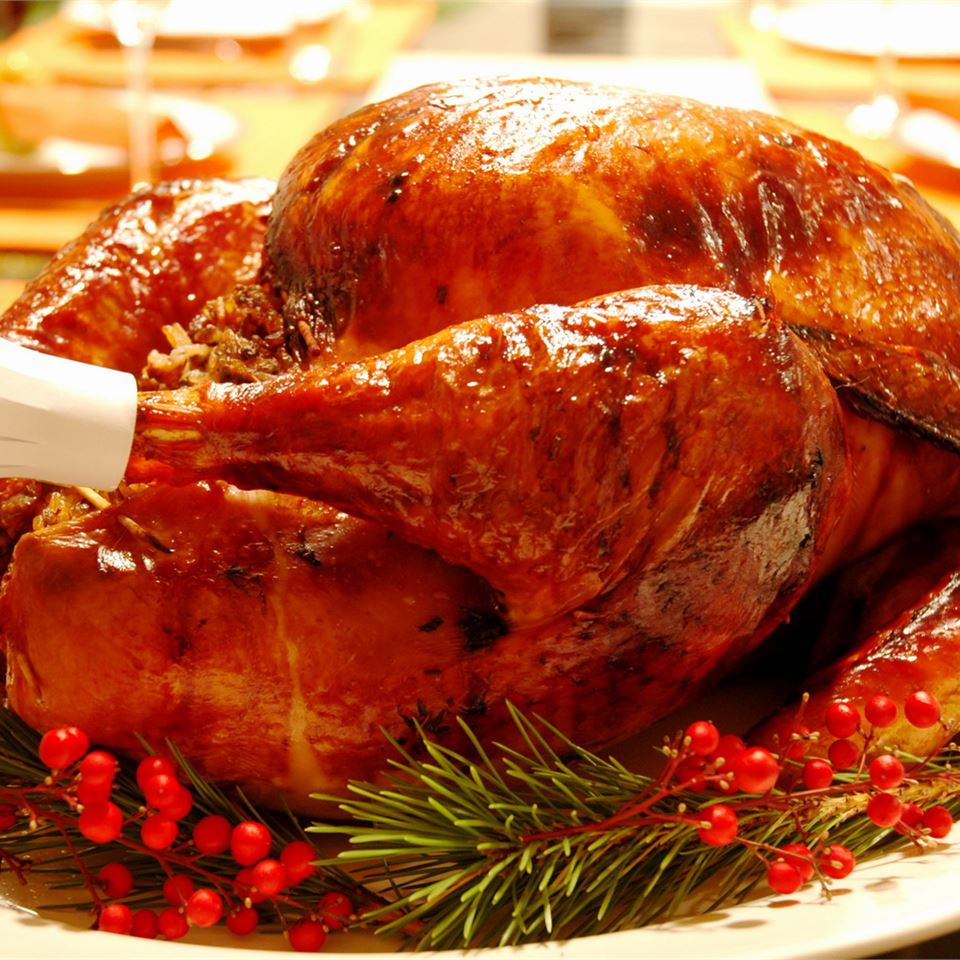
A New England style turkey with maple syrup. It makes for a mellow Thanksgiving dinner. Try stuffing it with Cranberry, Sausage and Apple Stuffing. If fresh marjoram is unavailable, 2 teaspoons of dried marjoram may be substituted.
Provided by Ibby
Categories Meat and Poultry Recipes Turkey Whole Turkey Recipes
Time 4h30m
Yield 20
Number Of Ingredients 16
Steps:
- Boil apple cider and maple syrup in a heavy saucepan over medium-high heat until reduced to 1/2 cup (about 20 minutes). Remove from heat and mix in 1/2 of the thyme and marjoram and all of the lemon zest. Add the butter, and whisk until melted. Add salt and ground pepper to taste. Cover and refrigerate until cold (syrup can be made up to 2 days ahead).
- Preheat oven to 375 degrees F (190 degrees C). Place oven rack in the lowest third of oven.
- Wash and dry turkey, and place in a large roasting pan. Slide hand under skin of the breast to loosen. Rub 1/2 cup of the maple butter mix under the breast skin. If planning on stuffing turkey, do so now. Rub 1/4 cup of the maple butter mixture over the outside of the turkey. With kitchen string, tie legs of turkey together loosely.
- Arrange the chopped onion, chopped celery, and chopped carrot around the turkey in the roasting pan. If desired, the neck and giblets may be added to the vegetables. Sprinkle the remaining thyme and marjoram over the vegetables, and pour the chicken stock into the pan.
- Roast turkey 30 minutes in the preheated oven. Reduce oven temperature to 350 degrees F (175 degrees C), and cover turkey loosely with foil. Continue to roast, about 3 to 4 hours unstuffed or 4 to 5 hours stuffed, until the internal temperature of the thigh reaches 180 degrees F (80 degrees C) and stuffing reaches 165 degrees F (75 degrees C). Transfer turkey to a platter, and cover with foil. Reserve pan mixture for gravy. Allow turkey to sit about 25 minutes before removing stuffing and carving.
- To Make Gravy: Strain pan juices into a measuring cup. Spoon fat from juices. Add enough chicken stock to make 3 cups. Transfer liquid to a heavy saucepan and bring to a boil. In a small bowl, mix reserved maple butter mixture with flour to form a paste, and whisk into the broth. Stir in thyme, bay leaf, and apple brandy. Boil until reduced and slightly thickened. Season with salt and pepper to taste.
Nutrition Facts : Calories 584 calories, Carbohydrate 10.5 g, Cholesterol 206.4 mg, Fat 29.3 g, Fiber 0.6 g, Protein 65 g, SaturatedFat 10.9 g, Sodium 313.6 mg, Sugar 7.5 g
SLOW-ROASTED TURKEY WITH APPLE GRAVY
Padma Lakshmi likes big, bold flavors - spices and citrus especially - and infuses her Thanksgiving turkey with them. She prepares the bird over a bed of herbs and produce, then uses those pan juices to create a fruity yet savory gravy. To keep the turkey moist, Ms. Lakshmi starts with a buttermilk brine, then roasts the bird at a low temperature to make sure it cooks through but doesn't dry out. But first, an initial blast in a very hot oven darkens the turkey in spots thanks to the sugar in the buttermilk brine. A final basting and uncovered cooking in the oven helps even out the mottled skin and ensures a delicate crispness. You can garnish the platter with the fruits, vegetables and herbs used in the recipe or serve the bird unadorned.
Provided by Genevieve Ko
Time P2DT6h
Yield 8 to 12 servings
Number Of Ingredients 25
Steps:
- Brine the turkey: Tear the bay leaves to release their natural oils. Place in a large bowl with the buttermilk, sugar, salt, black pepper and cayenne, and stir to dissolve the sugar. Place the turkey in a brining bag or clean unscented garbage bag, pour in the buttermilk mixture and tightly tie the bag closed. Place in a pot or bowl that holds it snugly, making sure the legs are fully immersed in the brine, and refrigerate for at least 48 hours and up to 72 hours.
- Make the turkey: Position a rack at the bottom of the oven and heat oven (not convection) to 450 degrees. Tear the bay leaves to release their natural oils. Spread the apples, fennel, onions, 12 bay leaves and half of the thyme, ginger, garlic and orange across the bottom of a large roasting pan. Sprinkle with salt and the whole peppercorns.
- Drain the turkey and wipe dry. (Discard the brine.) Place the turkey in the pan breast side up, and rub its cavity with salt and ground pepper. Stuff the cavity with the lemon and the remaining bay leaves, thyme, ginger, garlic and orange. Tuck the wings underneath and tie the legs together with kitchen twine. Sprinkle the turkey with salt and ground pepper, and drizzle everything with oil. Drizzle more oil all over the turkey and rub to generously and evenly coat the skin. Transfer to the oven and roast until browned in spots all over but not burned, 20 to 40 minutes. (Ovens vary widely in how quickly they brown such a large bird, so start checking at 20 minutes and keep going until it's spotted all over.)
- Pour 2 cups water into the pan, cover the turkey with foil and loosely crimp around the edges of the pan. Reduce the oven temperature to 300 degrees and slide the pan back into the oven. Slow-roast until the turkey is almost cooked through (a meat thermometer will register 150 degrees in the thickest part of the breast and 160 degrees in the thigh), about 4 hours.
- Uncover, baste all over with the pan juices and roast uncovered until the skin is more evenly browned and the meat registers 155 degrees in the breast and 165 degrees in the thigh, 30 to 45 minutes. The internal temperature will continue to rise as the turkey rests. Let cool slightly in the pan, then transfer the turkey to a serving platter.
- Make the gravy: Smash the fruits and vegetables in the roasting pan. Set a colander with small holes or a medium-mesh strainer over a bowl or pot, and pour in everything from the pan, working in batches if needed. Press hard on the solids to extract as much liquid as possible along with fruit and vegetable pulp. Discard the solids in the colander; scrape any strained pulp into the bowl. Skim and discard fat from the strained juices.
- Melt the butter in a large saucepan over medium-low heat. Add the flour and whisk until deep golden brown, 3 to 5 minutes. While whisking, add the defatted pan juices a little at a time, whisking until smooth, then stir in the brandy. Simmer, stirring occasionally, until thickened, 4 to 5 minutes. Keep warm over low.
- When ready to serve, season the gravy to taste with salt and pepper. Carve the turkey and serve with the hot gravy.
Tips:
- Thaw the turkey properly: Allow the turkey to thaw in the refrigerator for 4-5 days, or in a cold water bath for 30 minutes per pound.
- Choose the right roasting pan: Use a roasting pan that is large enough to hold the turkey without crowding, but not so large that the turkey will be swimming in its own juices.
- Season the turkey generously: Rub the turkey inside and out with salt, pepper, and your favorite herbs and spices. You can also add a compound butter or olive oil mixture under the skin for extra flavor.
- Roast the turkey at a high temperature: This will help to create a crispy, golden-brown skin. Roast the turkey at 450°F for 30 minutes, then reduce the heat to 325°F and continue to roast until the internal temperature reaches 165°F.
- Let the turkey rest before carving: This will allow the juices to redistribute throughout the meat, resulting in a more tender and flavorful turkey.
- Make a delicious gravy: Use the drippings from the roasting pan to make a flavorful gravy. You can also add vegetables, herbs, and spices to the gravy for extra flavor.
Conclusion:
With a little planning and preparation, you can easily roast a perfect turkey that will be the star of your holiday meal. Follow these tips and you'll be sure to impress your family and friends with your culinary skills.
Are you curently on diet or you just want to control your food's nutritions, ingredients? We will help you find recipes by cooking method, nutrition, ingredients...
Check it out »
#course #main-ingredient #occasion #main-dish #poultry #holiday-event #easter #christmas #thanksgiving #meat
You'll also love




